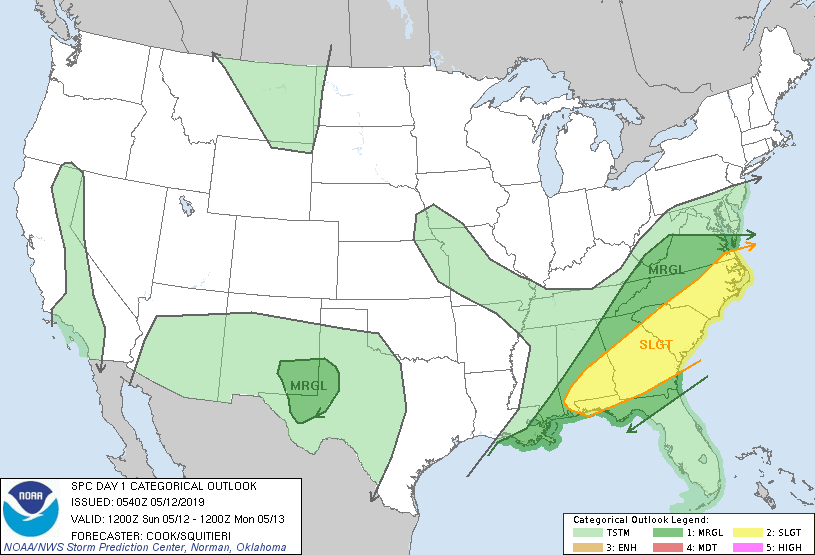Saturday dawned much as the Friday did;
cloudy, cold, and moist. These are the antithesis of severe weather conditions.
I am sure the fine people of Yukon were fine with this; Oklahoma gets more
than its fair share of severe weather this time of year.
One thing to clarify: we don’t come out
here hoping, or cheering, for severe weather to occur. We are not bloodthirsty
maniacs, after all. However, it tends to happen out here regardless of what anyone
does. Since that is the case, we came here to see it and, more importantly, learn from it. It is my fervent hope
that the things the students witness will make them better meteorologists,
determined to provide ample warning to the public.
Our ultimate destination for this day was the town
of Wolfforth, TX; a suburb of Lubbock. The Storm Prediction Center (SPC), and
the weather models, were hinting at the possibility of some marginally severe
thunderstorms in SW Texas, from Lubbock towards the Trans Pecos region (see
map). We felt that the Lubbock area was a good staging area. We could either
chase around there or move quickly to the south should the threat area shift.
 |
| SPC Outlook for Sunday |
Mr. Forsyth related a story about the first
attempts to sample the upper levels of the atmosphere. The story was excerpted
from Savannah Tennyson’s chase journal:
“when the first meteorologists were
testing the upper atmosphere and learning about how the atmosphere works they
would fly to about 19,000 feet; however, there is a lack of oxygen that high in
the atmosphere which caused some people to die. To resolve this problem the
pilots would bring their small animals up with them and when they started
getting drowsy they knew the needed to go back towards the ground because they
were in the zone of thin oxygen.”
The Museum also featured a “green screen”,
or chromakey wall, where students could practice reporting the weather as it is
done on television.
 |
| Keith Gregory stretches his TV legs in front of the Green Screen |
 |
| Shannon Sullivan at the Wall. The cape adds an interesting effect. Now you see her... |
 |
| Now you don't. |
We made our way to the library, which
featured one of the largest collections of weather books I have ever seen.
Fortunately, we had time for a few stories.
 |
| Story Time (Photo: Greg Nordstrom) |
Finally, the Museum is in the process of
restoring a plane used for thunderstorm research. Similar to the Hurricane
Hunters, there was once a plane designed to fly through severe thunderstorms..
 |
| Panorama of the museum. Thunderstorm plane on the left. Photo: Savannah Tennyson |
 |
| Savannah at the helm |
We left the Museum and made our way towards
Lawton for lunch. We traveled Interstate 44, which is a toll road through Oklahoma.
For some of our students this was their first experience on a toll road. Other
than the increased speed limits, there isn’t much to recommend it. Though we
did pass the Elmer Graham Turnpike Station. You can learn about this
extraordinary man here:
From Lawton, we worked our way south and
west towards Lubbock. Somewhere along the way, we (okay, I) took a turn towards the
south. We nearly made it to Abilene before realizing the mistake. Our detour
cost us about an hour but it did give us a chance to see more of the
extraordinary landscape of Texas. Basically, aside from a few random buttes and windmills, it’s quite flat and largely unpopulated. That makes it perfect for chasing.
After dinner, we settled in for the night.












No comments:
Post a Comment